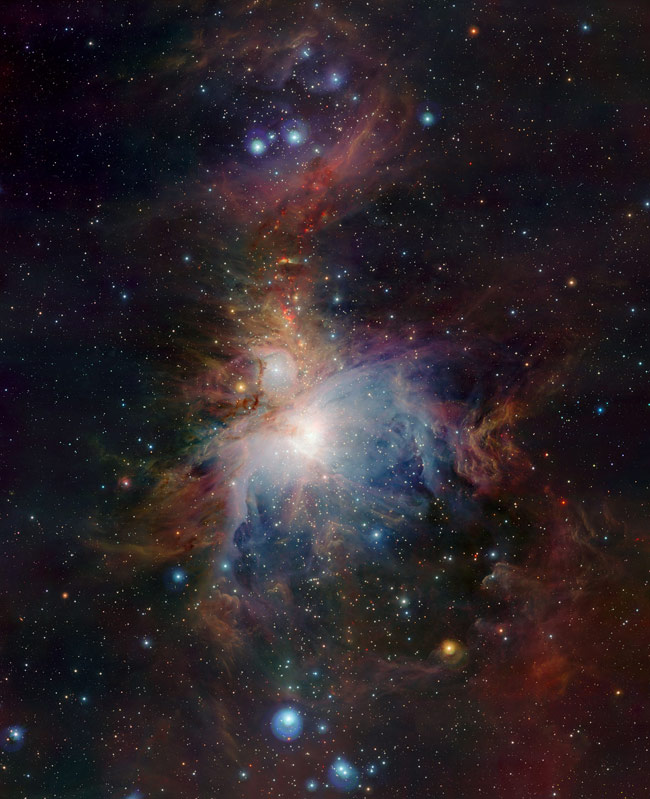New Image Penetrates Heart of Orion Nebula

New images and observations of the spectacular Orion Nebulahave revealed normally hidden dusty regions and the odd behavior of very youngactive stars buried within them.
This penetrating view of the Orion Nebula ? a vast stellarnursery about 1,350 light-years from Earth ? comes from the Visible andInfrared Survey Telescope for Astronomy (VISTA), the newest addition to theEuropean Observatory's Paranal Observatory in Chile.
Although the nebula is spectacular when seen through anordinary telescope, what can be seen using visible light is only a small partof a cloud of gas in which stars are forming. Most of the action is deeplyembedded in dust clouds and to see what is really happening astronomers need touse telescopes with detectors sensitive to the longer, infrared wavelengthradiation that can penetrate the dust.
VISTA has photographed the OrionNebula at wavelengths about twice as long as can be detected by the humaneye.
As in the many visible light pictures of this object, thenew wide field VISTA image shows the familiar bat-like form of the nebula inthe center of the picture as well as the surrounding area.
At the veryheart of this region lie the four bright stars forming the Trapezium, agroup of very hot young stars pumping out fierce ultraviolet radiation that isclearing the surrounding region and making the gas glow. Observing in theinfrared allows VISTA to reveal many other young stars in this central regionthat cannot be seen in visible light.
Looking to the region above the center of the picture,curious red features appear that are completely invisible except in theinfrared. Many of these are very young stars that are still growing and areseen through the dusty clouds from which they form. These youthful stars ejectstreams of gas with typical speeds of about 450,000 mph (700,000 kph) and manyof the red features highlight the places where these gas streams collide withthe surrounding gas, causing emission from excited molecules and atoms in thegas.
Get the Space.com Newsletter
Breaking space news, the latest updates on rocket launches, skywatching events and more!
There are also a few faint, red features below the OrionNebula in the image, showing that stars form there too, but with much less vigor.These strange features are of great interest to astronomers studying the birthand youth of stars.
- Images:Spectacular Nebulas
- GoCosmic Sightseeing with Orion, the Hunter
- Close-upView Shows Binary Stars in Orion's Heart
Join our Space Forums to keep talking space on the latest missions, night sky and more! And if you have a news tip, correction or comment, let us know at: community@space.com.

Space.com is the premier source of space exploration, innovation and astronomy news, chronicling (and celebrating) humanity's ongoing expansion across the final frontier. Originally founded in 1999, Space.com is, and always has been, the passion of writers and editors who are space fans and also trained journalists. Our current news team consists of Editor-in-Chief Tariq Malik; Editor Hanneke Weitering, Senior Space Writer Mike Wall; Senior Writer Meghan Bartels; Senior Writer Chelsea Gohd, Senior Writer Tereza Pultarova and Staff Writer Alexander Cox, focusing on e-commerce. Senior Producer Steve Spaleta oversees our space videos, with Diana Whitcroft as our Social Media Editor.









